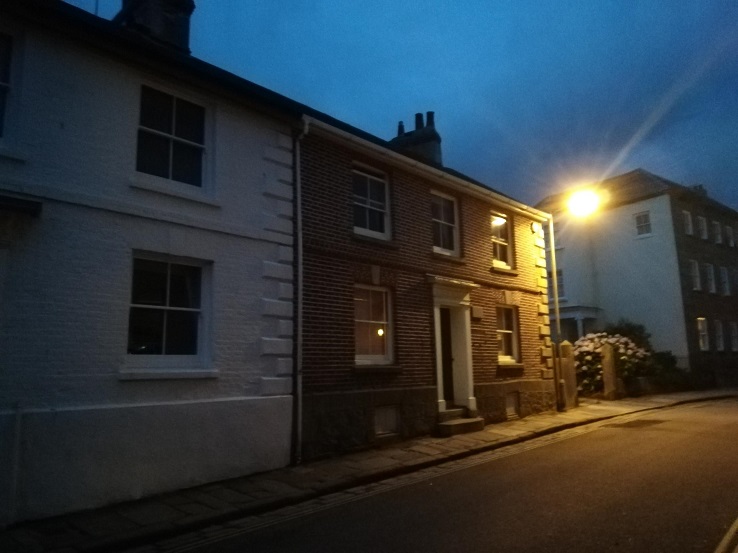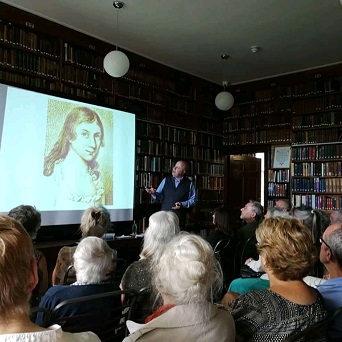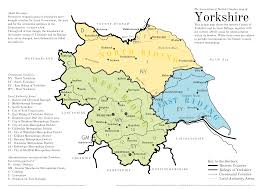I’ve just spent a blissful week in Cornwall, firstly in Newquay soaking up the sun and watching the sun setting over Fistral Bay turn the sea to a golden fire, and then in Penzance, where I followed the Brontë maternal trail and delivered a talk at the stunning Morrab Library, as well as attending an opening party of the Hypatia Trust’s new headquarters – a fantastic organisation that promotes the achievements of women throughout history.

I’ve arrived back in Yorkshire on an auspicious day, as the 1st of August is Yorkshire Day. That, of course, makes me think of the Brontës (although in truth I never stop thinking of them) and they are to me the Queens of Yorkshire. It’s important, however, to remember the Cornish influence upon them, and it’s this in part that led me to Penzance and to write my biography of a special woman without whom we wouldn’t have the Brontë novels that we love today – ‘Aunt Branwell and the Brontë Legacy’ will be published by Pen and Sword Books at the end of September, but on this day let’s have a look at the similarities between Cornwall and Yorkshire.
Brontë Birthplaces
Everyone associates the Brontës with Haworth, but Charlotte, Patrick Branwell, Emily and Anne were actually born in Thornton near Bradford, whilst the eldest Yorkshire siblings Maria and Elizabeth were born in Hartshead near Mirfield. Penzance in Cornwall was the birthplace of two special women in the Brontë story, Maria Branwell and Elizabeth Branwell – the aunt who stepped up to the plate after the tragic death of her sister in 1821.

Majestic Moorland
The moors around Haworth were a source of endless fascination for Anne and especially Emily Brontë, and they are almost a character in their own right in ‘Wuthering Heights’. Despite a distance of well over 400 miles between Haworth and Penzance, the young Branwells looked out upon a similar landscape as the Cornish town is also surrounded by rugged moors to the north.
Spectacular Seas
Haworth is far from coastal, but Anne Brontë loved the sea, and liked nothing more than being in Scarborough – the east coast resort that she visited annually while governess to the Robinson family, and to which she returned in her final days. Cornwall is renowned worldwide for its stunning coastline, and I believe that it is likely to be Elizabeth Branwell‘s tales of growing up by the sea that made her niece Anne love it so.

A Hint Of Magic
When spending time in Haworth or Penzance it’s impossible to escape a hint of magic, a sense of something other in the air. This can clearly be felt in ‘Wuthering Heights’ too, and we hear of Ponden Kirk -an ancient craggy outcrop with a hole at its base where legend says that crawling through it with a loved one could result in childbirth within a year if you married the person you were with – if you didn’t marry them, it would result in death within a year. This is clearly the fate that befell Catherine – she crawled through it with Heathcliff but didn’t marry him, and so is doomed to die. By coincidence, or not, an ancient stone structure near Penzance called Men-an-Tol carries exactly the same legend.

Penzance has a lot to be proud of – in Maria Branwell and Elizabeth Branwell it had two intelligent, loving, courageous daughters who did so much to shape the Brontë siblings into the genii they became. Whether you’re from Kernow or Keighley, Kentucky or Kyoto, be proud on this day and join with me in saying ‘Happy Yorkshire Day!’

I have frequently wondered why the Brontës didn’t travel more or rather why they left Haworth only in fits and starts; Anne for governess jobs (and to Scarborough on the Robinsons’ dime), Charlotte and Emily (and Patrick) to Brussels to putatively acquire skills which would enhance their roles as governesses (but not Emily, really!), Branwell locally and possibly to London. On the other hand, as soon as Charlotte married (and her family perished) she and her husband traveled widely including to Ireland (and Scotland?).
The obvious answer is ‘resources’ that the family didn’t have the wherewithal. But their aunt came from Cornwall (did she every visit Cornwall after she settled in Haworth?) and they had extended family there as well as in Ireland. There was also money to be had when needed (travel to Belgium, printing of book of poetry, Patrick’s surgery).
I suspect that the family very much lived in a projected future – after Patrick’s death – loss of his income and rent free accommodation; one where the three spinster sisters would be living hand to mouth as domestics etc. (see Aunt Branwell’s letter or will). I wonder whether there were examples of ladies in these circumstances in Haworth.
However, they managed to cast off this ‘mantle of despair’ and exptreme frugality when some project captured their imaginations freeing them to travel and spend sums others might have considered improvident (i.e. book of poetry), trip to London, preparation for equipping a girls’ school in Haworth.
This note is highly fragmented – with no good ‘conclusion’. However, it points, perhaps, to an area of interest for Bronte fans; ‘travel and the Brontes’.
I liked this post, keep them coming svp. Mel Massey
Wonderful post. I’m looking forward to your book about Aunt Branwell, a mostly ignored figure in the Bronte story, save as an example of severity, a shaker of salt on young, creative wings. If people wish to know the Brontes, such figures need to be explored more deeply. I find the depth of friendship between Elizabeth Branwell an Patrick Bronte remarkable. When it came to the children, they seemed in constant accord! Charlotte often portrayed those two as a united front when facing youth’s ideas and notions. I suppose that was a good idea if one was dealing with four budding geniuses!lol However, in other matters we know Miss Branwell was unafraid to cross lances with her brother in law. All this and for over 20 years , speaks of a high regard and real friendship.
Could there have been more tha ‘friendship’ between Patrick and Elizabeth? I am thinking of Patrick’s desperate attempts to remarry after Maria’s sad and untime demise;
the latter was her sister, unmarried and perhaps not unattractive. Mel
It’s possible, isn’t it? At the time, widows were legally barred from marrying the sister or brother of their departed loved one however, so any thought of marriage was out.
Anything is possible. However I believe Aunt Branwell’s fringe of false curls and her fondness for snuff, may have put a damper on romance. Seriously, I believe they could stay friends for 20 years because they were friends.